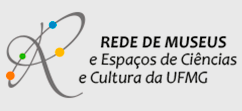
Autoria
– Yasmine Antonini
– Rogério P. Martins
Resumo
Inventariaram-se as espécies de abelhas silvestres da Estação Ecológica do Campus Pampulha da Universidade Federal de Minas Gerais, que é localizada em uma área intensamente urbanizada. As abelhas foram coletadas de janeiro a dezembro de 1996, quando visitavam plantas floridas. A fauna de abelhas é rica em espécies, mas suas populações têm baixas densidades (350 indivíduos em 98 espécies). A composição em espécies é sazonal (Q = 29,35; gl = 11; P < 0,002), entretanto composição em espécies das plantas floridas não é sazonal (Q = 17.30, gl = 11, P < 0,099). As abelhas visitaram 23 espécies de plantas em 11 famílias. Asteraceae (111 indivíduos de 53 espécies) e Convolvulaceae (88 indivíduos de 26 espécies) foram as mais visitadas. Houve uma correlação positiva entre a abundância de abelhas e o número de plantas floridas (r2= 0,72; P = 0,0011, n = 12) e entre a riqueza e abundância de plantas floridas (r2= 0,46; P = 0,010, n = 12). Na área estudada e em outros locais da Região Sudeste, Apidae foi a mais rica e abundante e na Região Sul do Brasil, Halictidae foi a mais rica e abundante. Apesar de circundada por área intensamente urbanizada, a estação ecológica mantém uma apifauna relativamente rica.
Palavras-chave: Fauna de abelhas, planta florida, fragmento florestal urbano
Abstract
The richness and the composition of bee species at the ecological station of the Universidade Federal de Minas Gerais, Campus Pampulha, Belo Horizonte, MG, Brazil, was recorded from January to December 1996. The bee fauna of the ecological station is rich (98 species) in low-density populations species (350 individuals). The composition of the bee fauna is seasonal (Q = 29.35, df = 11, P < 0.002), however the composition in flowering plants showed no seasonality (Q = 17.30, df =11, P < 0,099). The bee species visited 23 flowering plant species from 11 families. Asteraceae (111 individuals in 53 species) and Convolvulaceae (88 individuals in 26 species) were the most visited families. There was a positive relation between bee abundance and the number of flowering plants (r2=0.72, P = 0.0011, n = 12) and bee richness and abundance of flowering plants (r2= 0.46; P = 0.010, n = 12). In the studied area and other sites at Southeastern Brazil, Apidae was the richer and abundant family and Halictidae was the richer and abundant at South Brazil. Despite its localization in a heavily urbanized area, the ecological station supports a rich bee species assembly.
Keywords: Bee fauna, flowering plant, fragment of forest
Referência
Fonte: Neotropical Entomology 32(4) – International Journal
Ano: 2003.




